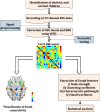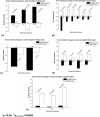EEG based functional brain networks analysis in dyslexic children during arithmetic task
- PMID: 36237405
- PMCID: PMC9508309
- DOI: 10.1007/s11571-021-09769-9
EEG based functional brain networks analysis in dyslexic children during arithmetic task
Abstract
Developmental Dyslexia is a neuro-developmental disorder that often refers to a phonological processing deficit regardless of average IQ. The present study investigated the distinct functional changes in brain networks of dyslexic children during arithmetic task performance using an electroencephalogram. Fifteen dyslexic children and fifteen normally developing children (NDC) were recruited and performed an arithmetic task. Brain functional network measures such as node strength, clustering coefficient, characteristic pathlength and small-world were calculated using graph theory methods for both groups. Task performance showed significantly less performance accuracy in dyslexics against NDC. The neural findings showed increased connectivity in the delta band and reduced connectivity in theta, alpha, and beta band at temporoparietal, and prefrontal regions in dyslexic group while performing the task. The node strengths were found to be significantly high in delta band (T3, O1, F8 regions) and low in theta (T5, P3, Pz regions), beta (Pz) and gamma band (T4 and prefrontal regions) during the task in dyslexics compared to the NDC. The clustering coefficient was found to be significantly low in the dyslexic group (theta and alpha band) and characteristic pathlength was found to be significantly high in the dyslexic group (theta and alpha band) compared to the NDC group while performing task. In conclusion, the present study shows evidence for poor fact-retrieval mechanism and altered network topology in dyslexic brain networks during arithmetic task performance.
Keywords: Arithmetic task; Developmental dyslexia; EEG; Functional connectivity; Graph theory; Network analysis.
© The Author(s), under exclusive licence to Springer Nature B.V. 2021.
Conflict of interest statement
Conflict of interestThe authors declare that they have no conflict of interest.
Figures








References
-
- Akbarian B, Erfanian A. A framework for seizure detection using effective connectivity, graph theory, and multi-level modular network. Biomed Signal Process Control. 2020;59:101878. doi: 10.1016/j.bspc.2020.101878. - DOI
-
- Arbabshirani MR, Calhoun VD. Functional network connectivity during rest and task: comparison of healthy controls and schizophrenic patients. Conf Proc IEEE Eng Med Biol Soc. 2011;2011:4418–4421. - PubMed
LinkOut - more resources
Full Text Sources
Miscellaneous

